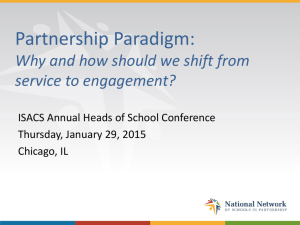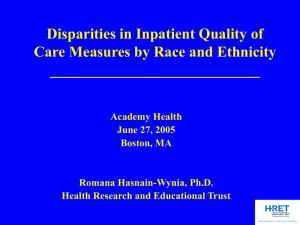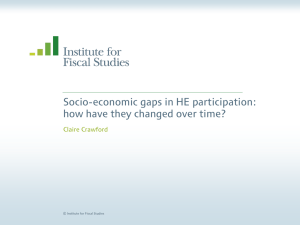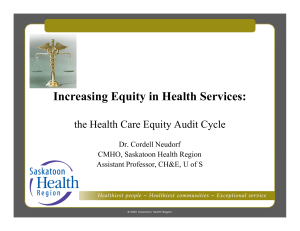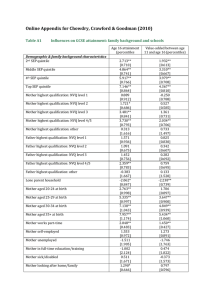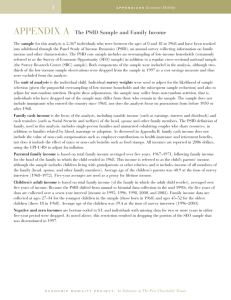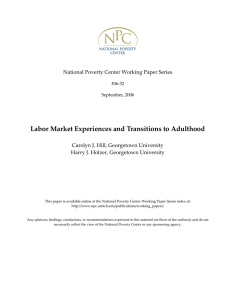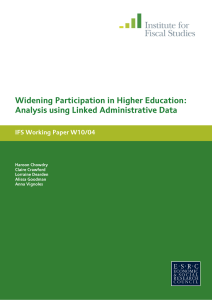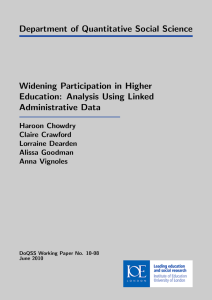Social Determinants of Aging - Population Association of America
advertisement
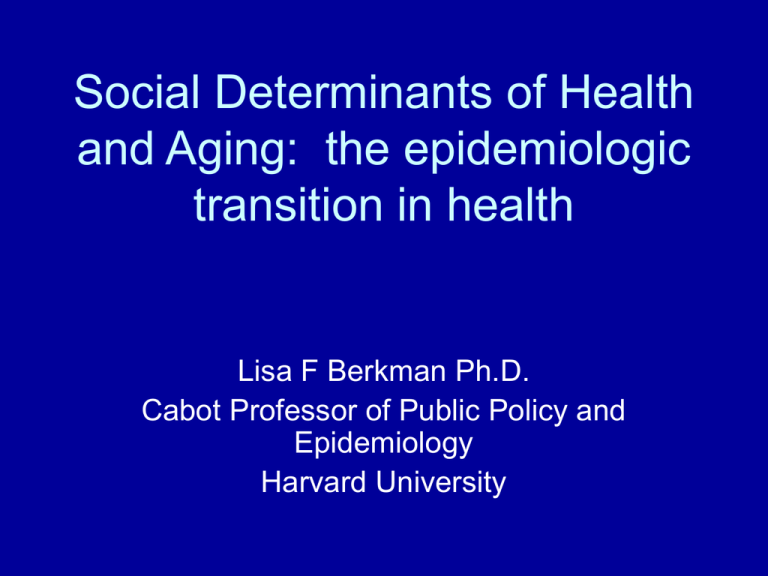
Social Determinants of Health and Aging: the epidemiologic transition in health Lisa F Berkman Ph.D. Cabot Professor of Public Policy and Epidemiology Harvard University Figure 6: THE INCREASING BURDEN OF CHRONIC NONCOMMUNICABLE DISEASES: 2002-2030 Source: Lopez AD, Mathers CD, Ezzati M, Jamison DT, Murray CJL, eds. Global Burden of Disease and Risk Factors. Washington, DC: The World Bank Group, 2006. Percentage of elderly people reporting at least one ADL limitation, by age groups, in households and institutions • Source: National Long Term Care Survey (reported in Manton et al., forthcoming). Age-specific disability rates (%) 60 1982 1994 2004/5 50 40 30 20 10 0 [65 to 74] [75 to 84] [85 and over] Life Expectancy in 2003: OECD countries Social determinants of Health • While d the distribution of disease changes, socially disadvantaged people and those who are socially isolated continue to be at increased risk • These patterns are true in the US and in other countries Life Expectancy at Birth Whites 1950 1960 1970 1980 1990 1996 2003 Blacks Men 66.5 67.4 68.0 70.7 72.7 73.9 Women 72.2 75.6 78.1 79.4 79.7 Men 58.9 60.7 60.0 63.8 64.5 66.1 Women 62.7 65.9 68.3 72.5 73.6 74.2 75.3 80.4 68.9 75.9 74.1 All-Cause Mortality Among US Men by Area Socioeconomic Status, 1969-1998 1300 Ist Weighted Quintile (Low SES) 1250 2nd Quintile 3rd Quintile 1200 4th Quintile 1150 5th Weighted Quintile (High SES) 1100 1050 1000 950 900 850 800 750 700 1997 1995 1993 1991 1989 1987 1985 1983 1981 1979 1977 1975 1973 1971 650 1969 Age-Adjusted Death Rate per 100,000 Population 1970 US Population Used as Standard 1350 Mortality Rate from All Causes by Social Networks : Alameda County 1965-74 (Berkman and Syme AJE, 1979) 18 16 14 12 High SNI Med-high Med-low Low SNI 10 8 6 4 2 0 Men Women Social Engagement and the maintenance of good cognitive function Social engagement is defined as the maintenance of many social connections and a high level of participation in social activities. Bassuk, SS, Glass, TA, Berkman, LF: Social Disengagement and Incident Cognitive Decline. Annals of Internal Medicine 131(3): 165-173, 1999. Cognitive decline over 12 years by social disengagement among older men and women ( OR 2.37) 60 50 40 0 ties 1-2 ties 3-4 ties 5-6 ties 30 20 10 0 %decline Caregiving in the Nurses Health Study. Lee,Colditz,Berkman,Kawachi, AM J Prev Med 2003:24(2):113-119 • 54,412 women in the Nurses Health Study, ages 46-71 (no documented CHD) • Information on caregiving in 1992 • CHD follow up 1992-1996 • 321 incident cases CHD RR: Caregivers of Disabled/Ill Spouse 3.5 3.0 2.5 2.0 1.5 1.0 0.5 297 8 16 214 7 10 0.0 Total CHD Hours of Caregiving Per Week: Nonfatal CHD 0 1-8 >=9 What happens when the epidemiologic and demographic transitions collide? Workers have heavy caregiving loads • 25% of employees have cared for an elderly relative in the last year • More dual-earning couples • 20% of working parents are also providing elder care • ~50% of workers are caring for someone Bond, Galinsky, Swanberg. 1998. Families and Work Institute An aging and diversified workforce • Older workers will need more flexible jobs to contribute fully • Middle aged adults in the workforce also need more flexible jobs • Benefits/policies/practices related to retirement, child care, sick leave, part time, health insurance, disability, worker’s compensation- may turn out to contribute to a healthier workforce than we think.
